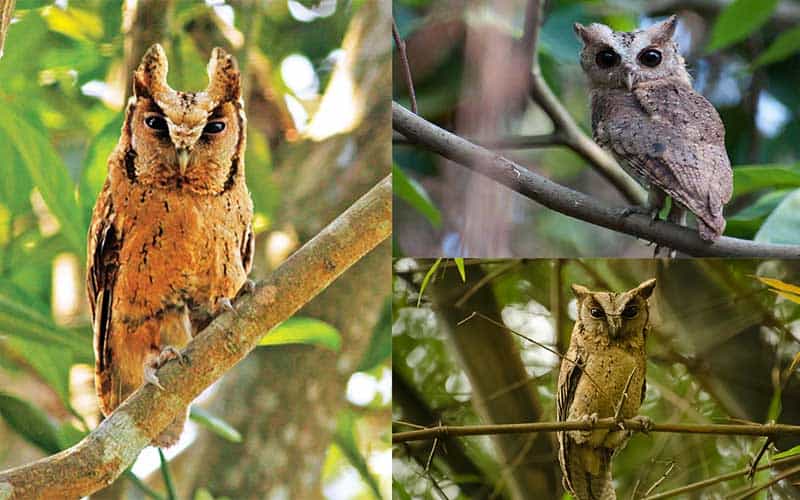The Collared Scops Owl fluttered its wings of wellness in the deep forest of Lawachara.
The Collared Scops Owl fluttered its wings to fly after recovering in the deep forest of Lawachara. Sometimes nature becomes so cruel and threatens the life of wildlife.

However, some individuals happily take the responsibility to nurture the injured/endangered species with care and love. A few days ago, a Collared Scops Owl fell to the ground after colliding with a speeding autorickshaw on Lawachara road.
A motorcyclist found it and took it to wildlife photographer Khokon Thounaujam. He took the responsibility of curing the bird through their local organization, Stand for our Endangered Wildlife (SEW). That’s how this endangered bird got healed and fly back to its natural habitat again.
In this regard, Khokon Thounaujam, founder of SEW, said, Collared Scops Owl collided with a speeding autorickshaw on Lawachara road.
It was severely injured and fell on the road. Rizvi, a local motorcyclist, rescued it and brought it to us.
He further added, “Let alone flying, the injured owl couldn’t even stand up properly.” After the initial care, the owl was kept under close observation for a few days. Adequate rest and food are also provided.
Sohail Shyam, another founder of the SEW organization, looked after the need of the bird. As a result of regular massage of the wings and legs, the owl can fly within four to five days.
In the presence of Janakichhara bit officer Anisuzzaman, the organization’s members again released the owl in the depths of Lawachara forest.
Khokon Thounaujam said that a total of four species of Scops owls are found in Bangladesh. Mountain Scops Owl, Oriental Scops Owl, Indian Scops Owl, and Collared Scops Owl.
Among them, the collared scops owls are 23 to 25 cm in size. It has long gray ears and crests on its dark brown body: dark-brown lines and yellow stripes on the neck. The wings have yellow spots. The upper beak is green, and the lower is dark. At night it makes sounds like ‘tuo’ or ‘neem.’
He also talks about the food habit of scops owls “They are entirely nocturnal and resident birds. It likes to be hidden from public sights. “
During the day, they rest in the shade of thick leaves or the hollows of trees. So it’s pretty challenging to find them. It comes out to haunt at night.

Its prey list includes mainly various types of insects, grasshoppers, lizards, chameleons and small birds.
Khokon further added that the breeding season of collared scope owls is February to April. They either lay their eggs in the natural bark of tree trunks or the abandoned nests of woodpeckers. The eggs are white in color, three to five in quantity.



